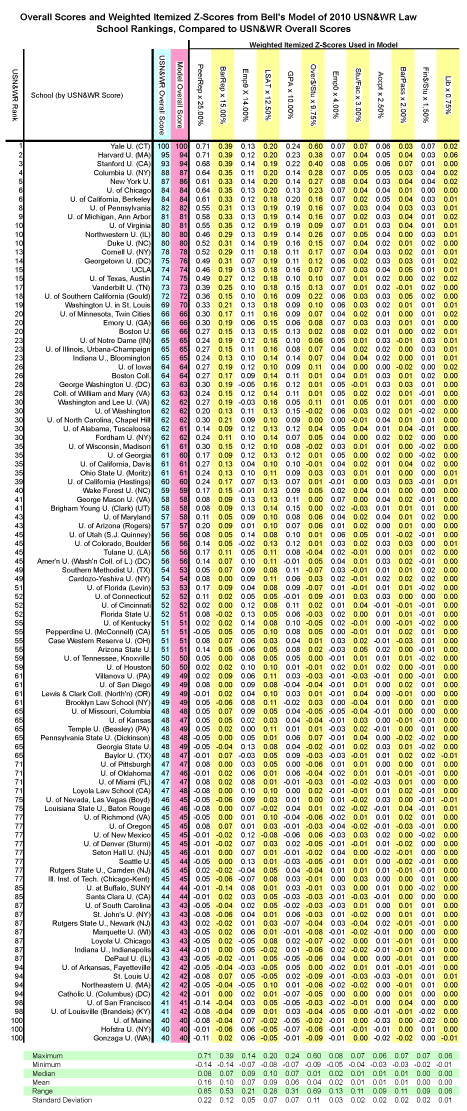
For cross-year comparisons, please see the similar reports I offered in 2005, 2006, 2007, and 2008. This year, in response to a reader's request, I've added various diagnostic measures, such as the mean, median, and standard deviation of each itemized category of data. As I did last year, I again provided weighted z-scores, meaning simply that I've multiplied the z-scores in each category of data by the percentage that category influences a school's overall score. That method of presenting z-scores has the virtue of highlighting which scores matter the most.
Unsurprisingly, you'll generally find the largest numbers in the upper, left-hand corner of the chart. There lie the most heavily-weighted z-scores of the law schools that scored the highest in USN&WR's rankings. Consider, for instance, the .71 weighted z-scores enjoyed by Yale and Harvard under the "PeerRep" category; those numbers nearly swamp the effect of other measures of those schools' performances, and have twice the impact of the peer reputation scores of schools ranked as close as 20th from the top.
This presentation of the data also shows how very little influence many of the things that USN&WR measures have on its rankings. The weighted z-scores for Bar pass rates, for instance, vary between only .07 and -.02, with a whole lot of zeros filling that span. Bar passage rates evidently do not matter much to any school's USN&WR score.
Rankings geeks will doubtless find close study of this table rewarding. I'm especially interested in the surprising impact of the top schools' overhead expenditures/student—a phenomenon that I discussed in some detail last year. Perhaps I'll return to that topic, and raise some new ones, in later posts. In the meantime, I welcome your own observations.
[Crossposted at Agoraphilia, MoneyLaw.]
No comments:
Post a Comment